Rowing Technique Part 2 - Program Consistency
Erik Dresser, row2k.com
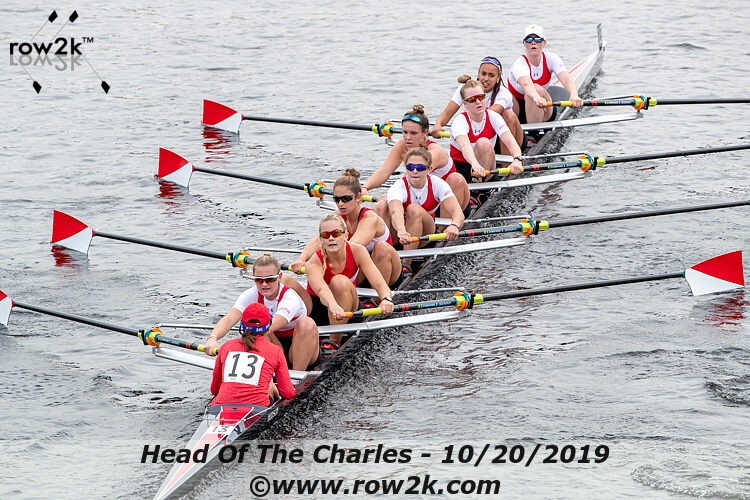
Following the cancellation of the 2020 spring racing season, row2k solicited the collegiate coaching community to engage in a variety of high-level topics within the profession. We submitted over sixty questions across a dozen topics and thank the coaches and staffs that found time to contribute their thoughts during this stressful time.
This week we focus on the topic of Technique with the following question:
WHAT IS YOUR APPROACH TO ENSURE TECHNICAL CONSISTENCY THROUGHOUT THE ROSTER?
MADELINE DAVIS – BOSTON UNIVERSITY WOMEN
The key here is ensuring that the technical feedback that the athletes receive from all coaches within the program is consistent. I meet regularly with my staff, formally or informally, to review what we’re working on technically with everyone on the team. The winter is a great time for this – we’re all seeing the whole team on the ergs, rather than being more siloed with our specific race crew(s). This allows the coaches to collaborate in real time and convey direct and consistent feedback to each athlete on the roster to keep them focused on the technical aspects that are most important.
ERIC GEHRKE – GEORGE WASHINGTON MEN
I have tried to travel and work with/for coaches I sought out as mentors but the programs I have seen have technical consistency are ones where the head coach initially puts out a vision of what they expect the stroke to be like, engages the assistants as collaborators in how to teach that stroke, and then checks in with all levels of boats throughout the season for different practices (not just coaching the 1V every day).
ETHAN SHOEMAKER – STETSON
We have a small roster, so I can work with every member of our team almost daily. This allows me to ensure that each individual on the team is rowing with the same technical goals regardless of the crew they wind up racing in. On the same note, we row mixed lineups for the vast majority of the year in order to ensure we are all learning the same things at the same time.

We also do routine video reviews and educational sessions with the rowers to demonstrate and illustrate what we want, and what we don’t want from a technical standpoint. In short, technical consistency is not easy because athletes’ bodies are all different, but with our limited roster there is a lot more opportunity for us to work with each member individually to help build more consistency from one rower to the next.
TOM BOHRER – BOSTON UNIVERSITY HEAVYWEIGHT MEN
Keep using the same language for the stroke you are trying to develop. Have a video that is clear in what you are looking for so the entire team can see that. Keep your key elements of the stroke simple and concise – Example: Place blade to the water with the last roll of the slide>brace the core>drive the angle. In those 3 cues – your entire squad should know what that means, what it looks like, what it feels like.
ALICEA STRODEL – MINNESOTA WOMEN
We row a lot of mixed line-ups in the fall and winter. This allows many women on the team to hear my coaching and drilling. Additionally, I only utilize 4 drills all year long which keeps the messaging pretty simple and focused. We are lucky to have a tank that we use year-round but helps to keep deliberate technical training in the winter.
KEMP SAVAGE – EASTERN MICHIGAN WOMEN
We have a major focus with our novice program of teaching the varsity style right away. It requires a novice coach who has a really good understanding of the program's style and how to teach it. Then as athletes move up to Varsity, we use a progression of the technique focus moving to the next part of the stroke each week, so that we don't get hung up on a single technique change for the entire season.
TODD KENNETT – CORNELL HEAVYWEIGHT MEN
This is a hard topic to create success with. I believe it comes first from the coaching staff being on the same page and having the same picture of the stroke in their head. The staff needs to be working towards the same goals with athletes or else you will have grave misunderstandings. This can evolve, and change, but that core group needs to understand and think of the stroke in the same way. Then the coxswains need to understand it as well.
Having them realize what the coaches are looking for, just makes the message to the athletes so much stronger. They are the captains of their boats, and if they understand what the coaches are trying to achieve with the athletes, they can help so much more getting the athletes the same message. Video is key. Video of good rowing strokes, then compare it to their rowing strokes. Frequently. Doing this when they are not stressed, but then also when they are stressed (pulling hard) is important.

DAN ROOCK – DARTMOUTH LIGHTWEIGHT MEN
Be consistent with teaching and drilling, and row mixed/even boats as much as is feasible given the depth of the squad and schedule of races.
JENN LANGZETTEL – DUQUESNE WOMEN
We do quite a bit of lower rating work and pauses to find check points as a unit. When on the erg we will also take the time to focus on the power curve. We also utilize video to give the visual feedback.
BILL ZACK – SAN DIEGO STATE WOMEN
The easiest way is to hire a great assistant coach like Dan Duxbury or Joeri Bruschinski who already embraces the same technical approach that I do. For newer assistant coaches, we talk about the technical approach before the season starts. At San Diego State we’ve had a long run of really smart coxswains who know what we want and coach our technique no matter what boat they are in. And we talk about technique with the rowers all the time, not just on the water but also in the erg room and the weight room. Video review with the entire team really helps as well.
BART THOMPSON – ADRIAN
Having a conversation with your assistant coaches before the season (especially if any of them are new) about the key technical elements that you want all of the crews to have is vital. Referencing (through photos and videos) the rowing of other crews is also helpful.
With our rowers, I regularly send them videos of crews that are rowing with the technical elements that we want to use, along with a quick description of the noteworthy elements of that crew’s rowing.
BRIAN DAWE – TUFTS WOMEN
Watching lots of videos of “good” (the picture in my head) rowing with the team while pausing, running in slow-motion, making comments, asking questions. Trying to teach from fundamental ideas of how boats move using slides, words, words of other coaches, video snips from coaches who say the “right” things. Using the dock box throughout the squad in small groups. Looking for ways to say the same things using different words until I see the result I’m looking for.
JOHN BOYD – IONA
First and foremost, I coach the blade. Eight athletes in a boat means eight different body types and physical attributes. I am looking for eight blades to enter and exit the water in the same fashion. There cannot be a compromise there. With that said, I am liberal with how the individual achieves proper technique, within reason of course.

AL ACOSTA – CALIFORNIA, BERKELEY WOMEN
I think we do a pretty good job of having one model for a stroke. I'm not sure if the whole team rows like this, but it's important that they're trying to get there! Equally challenging, I think, is to keep the rhythm consistent.
ROBERT BRADY – FRANKLIN AND MARSHALL
To teach technique to a program, I first highlight the technical aspect we are going to focus on, improve or change through a detailed discussion that breaks down the why and the how. Depending on the technical focus - if it's big - we may spend a large portion of practice discussing it, watching video and answering any questions. I want to make sure the rowers, coxswain, and assistant coaches understand what we are doing because if they don't, it could end up being a guessing game for them.
Once we have the focus in mind, I like to establish a series of drills that build upon themselves day after day - as opposed to doing just one drill over and over, or only doing drills three days a week. For example, in a given week, maybe we are focusing on a technical aspect of the finish and release, and Monday through Saturday we are working on a new drill every day that still has the finish as it's priority. So, in a single week, we may do five different drills that evolved from Monday to Saturday, all to focus on one specific aspect of technique. The following week those drills may again be incorporated or evolve even further.
JIM LISTER – HAMILTON
Between staff and coxswains, we may say something differently, but let's all have an understanding of what we are asking the rowers to do.
MEGAN COOKE-CARCAGNO – DUKE WOMEN
I try to do a lot of demonstrations team-wide to ensure everyone is hearing my language when it comes to technique. My biggest lesson is less about what it looks like, but more about how it should sound and feel. We also row a lot of mixed boats, so everyone is rowing the same style. I find feet out and square blades gets rid of the extra stuff people throw into a stroke that is unnecessary and inefficient.
CAMPBELL WOODS – MARIST MEN
When I was in college, I was a bit of a chameleon as an athlete and felt like I could adjust to row with or like any particular crew. I struggled, though, with coaches who could not easily answer the question of “How do you want me to row?”

As I moved on to being a coach I found that many of the coaches around me did the same thing and I even at times (in my earlier years as a coach) found myself doing the same thing I had experienced as an athlete. I think there is a real fear among coaches of putting themselves out there to stamp their names on a specific technique as they run the risk of being wrong. These coaches defend their lack of clarity saying they know good rowing when they see it and that they simply select the athletes who have the technique that they want.
This approach, however, leaves potential talent on the sideline and slows development of the whole crew. I have taught at least 2 different schools of stroke style since I started coaching but my one biggest piece of technical advice to any coach is MAKE CLEAR WHAT YOU WANT (whatever it is). I go to great lengths with my current crews to have ongoing technical discussion and debate, to watch and interrogate video from all kinds of sources and to compare its strengths and weaknesses. We make explicitly clear what technique we expect and we bolster this with video evidence and a clear understanding of the physics of the boat and the oar and the biomechanics of the oarsman so that the rowers understand that there is a REASON to row this way outside of just that we said so.
ANONYMOUS HEAD COACH
A point I have made to my team is that the thing that separates people into different lineups and boating’s should be how much power they produce, but that there is no reason that the person in the last boat can’t be rowing as well as someone in the Varsity 8+; that we all have the ability to learn and grow and make changes. Our goal is to get everyone rowing the same. The execution and focus on the drills are probably the best way to reach that goal of everyone rowing the same.
If you enjoy and rely on row2k, we need your help to be able to keep doing all this. Though row2k sometimes looks like a big, outside-funded operation, it mainly runs on enthusiasm and grit. Help us keep it coming, thank you! Learn more.
Comments | Log in to comment |
- Bont Rowing
- Calm Waters Rowing
- Concept 2
- Craftsbury Sculling
- The Crew Classic
- CrewLAB
- Croker
- Dad Vail Regatta
- Durham Boat Co.
- Empacher
- Faster Masters
- Filippi
- Fluidesign
- h2row.net
- HUDSON
- Live2Row Studios
- Nielsen-Kellerman
- Oak Ridge RA
- Peinert Boat Works
- Pocock Racing Shells
- Race1 USA
- Rockland Rowing Masters Regatta
- RowKraft
- Rubini Jewelers
- Vespoli USA
- WinTech Racing
- Bont Rowing
- Calm Waters Rowing
- Concept 2
- Craftsbury Sculling
- The Crew Classic
- CrewLAB
- Croker
- Dad Vail Regatta
- Durham Boat Co.
- Empacher
- Faster Masters
- Filippi
- Fluidesign
- h2row.net
- HUDSON
- Live2Row Studios
- Nielsen-Kellerman
- Oak Ridge RA
- Peinert Boat Works
- Pocock Racing Shells
- Race1 USA
- Rockland Rowing Masters Regatta
- RowKraft
- Rubini Jewelers
- Vespoli USA
- WinTech Racing



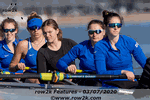
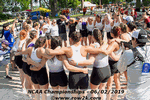
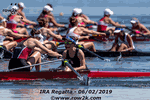
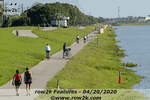
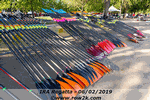
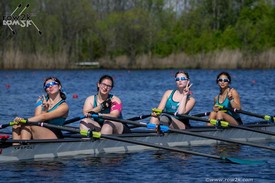










05/20/2020 12:48:30 PM
Not usually, I think, but sometimes idiosyncrasy is good. I remember the late Charlie Butt, father of Charley Butt, the current Harvard head coach, discussing how Tony Johnson and Larry Hough, world gold and Olympic silver medalists, used to put on their maximum power at opposite ends of the stroke with the result that the pair went absolutely straight.